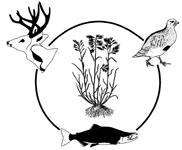Extension Wildlife & Fisheries Specialists Conferences

Triennial National Wildlife and Fisheries Extension Specialists Conference: 8th (1996)
Date of this Version
6-1-1996
Document Type
Presentation
Citation
Published in W. Daniel Edge, editor. Proceedings of the 8th National Extension Wildlife and Fisheries Specialists Workshop: Educational Challenges for the 21st Century. [1996]
Corvallis, Oregon: Oregon State University, 1998
Abstract
One asset of wildlife to landowners is the potential but understudied role of birds and other species as endemic natural enemies of crop pests. Enhancing such natural enemies as part of sustainable agricultural systems offers promise for maintaining agricultural competitiveness while providing wildlife habitat in intensively farmed areas. The University of Nebraska has established an agroforestry research team to address interdisciplinary questions and outreach associated with this topic. Included are studies of bird, mammal, and insect use of woody and herbaceous corridors and adjacent cropfields in east-central Nebraska. Uncultivated areas needed to sustain natural enemies of crop pests also provide other benefits. Properly planned windbreak edges, for example, can enhance stewardship of soil and water by preventing erosion, conserving moisture, and increasing dryland crop yields. Management practices that enhance endemic natural enemies of crop pests and provide other benefits can better ensure long-term continuation of agriculture and living wild resources, an opportunity for extension education and future research.


Comments
United States government work